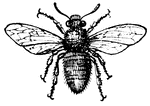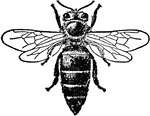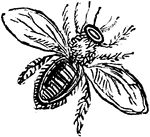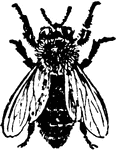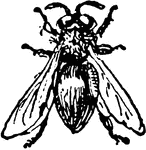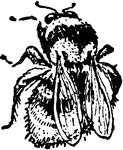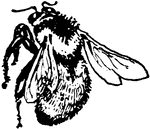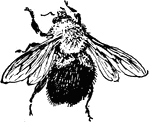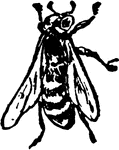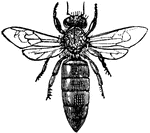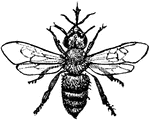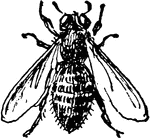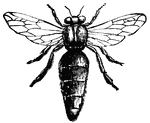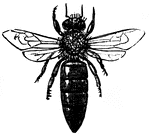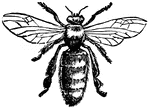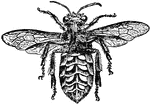
Ailmentary Canal
"ailmentary canal of a honey bee. at, honey stomach; s, true stomach; nt, intestine; o, esophagus; sg,…

Bee Abdomen
"Abdominal Plate (worker of Apis), under side, third segment. W, wax-yielding surface, covering true…
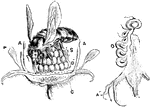
Bee Gathering Nectar
Pictured is a bee gathering nectar from the raspberry blossom. B pictures a section through ripe fruit.
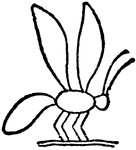
Bee Heiroglyph
"Sign of the king of Lower Egypt; from the coffin of Mykerinos, 1633 B.C." — The Encyclopedia…
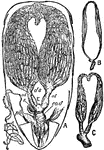
Bee Ovaries
"Ovaries of Queen and Workers (Apis). A, Abdomen of queen, under side. P, Petiole. o, o, Ovaries. hs,…
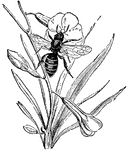
Bee Pollinating a Flower
"Bee, the common name given to a large family of hymenopterous or membranous-winged insects, of which…
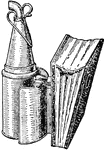
Bee Smoker
Bee smokers are used as protection for the bee keepers. Smoke is used to calm agitated bees.
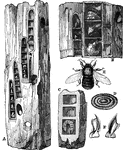
Carpenter Bee
"A, B, C, tunnelings of the carpenter bee; E, the carpenter bee; D, a partition; F, teeth, magnified"…
Carpenter Bee
Carpenter bees are large, hairy bees distributed worldwide. Their name comes from the fact that nearly…
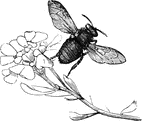
Drone Bee
"The working bee, for collecting wax, enters a flower, the stamens of which are loaded with pollen.…

Drone Bee
"Bee is the common name given to a large family of hymenopterous or membranous-winged insects, of which…
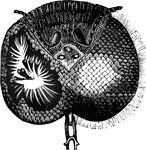
Eyes of a Bee
"The eyes, which are among the most wonderful objects in nature, are almost always of the kind called…

Honey Bee
"They are said to have originated in Greece, but have since spread all over the world; they live in…

Honey Bee
"Head and Appendages of Honey-bee (Apis). a, Antenna or feeler. g, Epipharynx. mxp, Maxillary palp.…

Mason Bee
"The Mason Bee, Osmia, of which there are many kinds, makes its cells in spaces from which…

Mouth and Tongue of a Bee
"The structure of the mouth in insects exhibits very remarkable modifications, and these are of the…
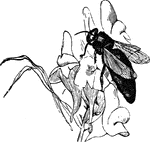
Queen Bee
"The queen bee is larger and longer than the other bees; she moves in a slow and majestic manner, and…
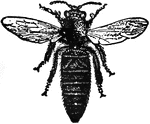
Queen Bee
"Bee is the common name given to a large family of hymenopterous or membranous-winged insects, of which…

Worker Bee
"Bee is the common name given to a large family of hymenopterous or membranous-winged insects, of which…

Working Bees
""The working bee, for collecting wax, enters a flower, the stamens of which are loaded with pollen.…
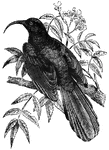
Namaqua Bee-Eater
The namaqua bee-eater, native to Western Africa. Its diet consists of insects, particularly bees and…

Beehive
"Simple form of the Bee-hive, With cap removed to show glass top." — Chambers' Encyclopedia, 1875

Bees Secreting Wax
"The secretion of wax, it would appear, goes on best when the bees are in a state of repose, and the…
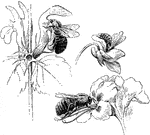
Bees Visiting Flowers
"Bees visiting flowers. At the left, a bumblebee on the flower of the dead nettle; below, a similar…

Cells of Honey Bees
"The hexagonal cells for the honey are build upon precisely that mathematical angle which affords the…
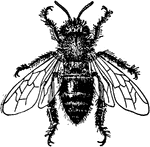
Honey Bees
Bees are flying insects closely related to wasps and ants. Honey bees (or honeybees) are a subset of…

Honey Bees
Bees are flying insects closely related to wasps and ants. Honey bees (or honeybees) are a subset of…
Honey Bees
Bees are flying insects closely related to wasps and ants. Honey bees (or honeybees) are a subset of…
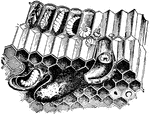
Honey Bees
Bees are flying insects closely related to wasps and ants. Honey bees (or honeybees) are a subset of…

Nest of the Carder Bee
"The elevation of the dome, which is all built from the interior, is from four to six inches above the…

